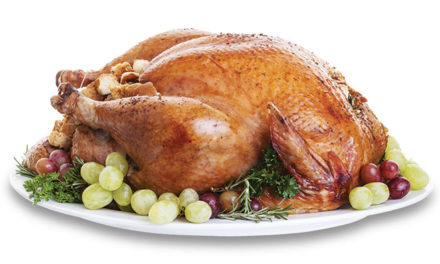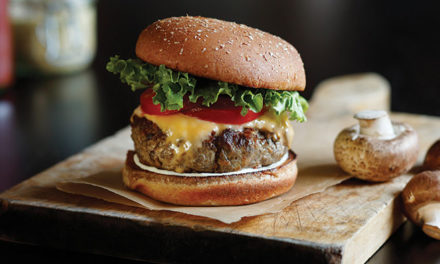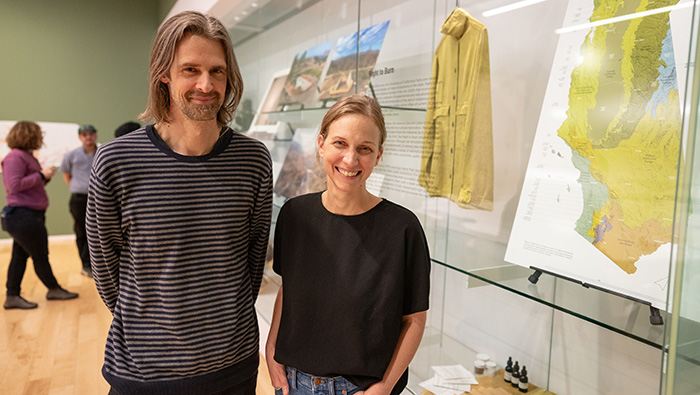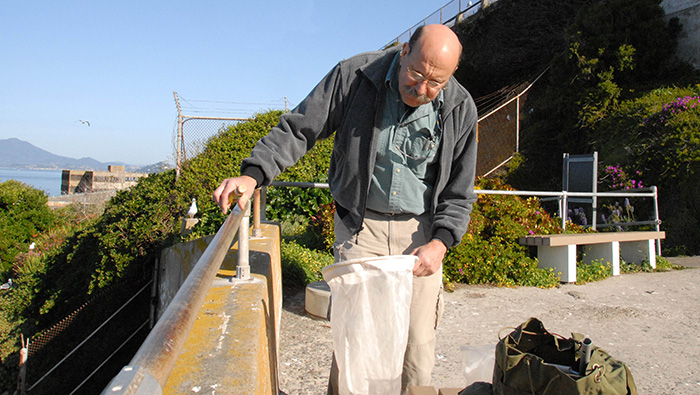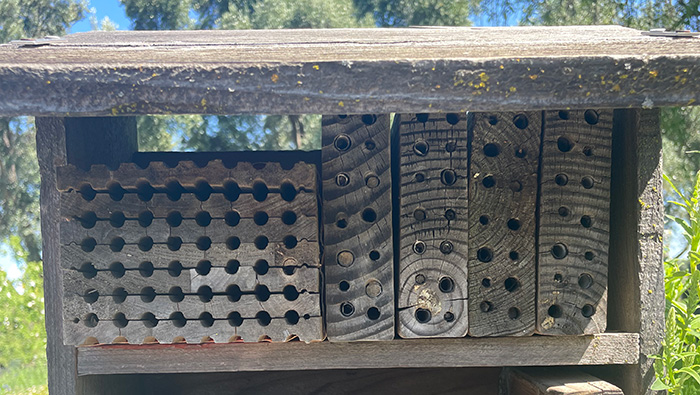
How to Build a Bee House
About 30% of California’s native bees live above ground. These bees nest in old trees in the wild, but in urban landscapes, a bee house can provide similar habitat. These bee houses can be made of wood blocks or cardboard tubes, and they are used by bees in the family Megachilidae. This group includes leaf cutters, mason bees, resin bees and a variety of other solitary bee species, which do not form colonies or produce honey.
Bees in this family use a variety of materials in their nests, from leaves to plant resin. After collecting a mound of pollen and nectar for sustenance, female bees wrap their egg and food together with their specific building material. The eggs take about a year to mature, and the hatched larvae chew their way out of the leaf material. The bees often return to the same area for nest-building, so it’s important to keep the house in the same location.
Christine Casey, an educator and manager of the UC Davis Bee Haven, supervises a redwood block bee house in the Haven. “It’s really fun to see the bees come and go,” Casey said. Plants like the western redbud, California wild rose and lamb’s ear can be grown around the bee house to provide material and encourage activity, but she added, the decision about nest location is “mostly random.”
Ever wondered how you could support native bee habitat? Here are two ways you can host a bee colony in your own backyard. Use cardboard or bamboo tubes specially made for bees or opt for the wood block variation.
Building a bee house of tubes
- Place cardboard or bamboo tubes in a container. They should be 5 inches long and 3/16, 4/16, and 5/16 inches in diameter. Find them online or at your local nursery.
- The back of the house should be solid so that no light enters.
- The tubes should be protected from the afternoon sun and secured so they don’t move in the wind. An overhang to protect the structure from rain is beneficial.
- To prevent disease, replace tubes in the spring once the material filling the tube has been chewed open. This indicates that the bees have matured and left.
Building a wood block bee house
- Use redwood or other untreated lumber.
- Drill holes should be 5 inches deep and use 3/16, 4/16, and 5/16 drill bits to accommodate varying-sized bees.
- Fill each cavity with pesticide-free bee designated paper straws, found online. Change the straws yearly to keep the block clean.
- Alternatively, blocks can be used without straws, and should be replaced after two years.


